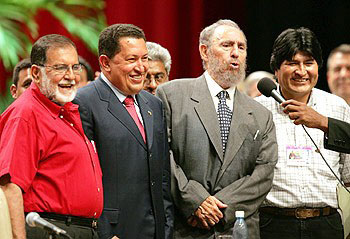At 10.29 pm on Friday, November 25, the Cuban revolutionary leader Fidel Castro died at the age of 90. His brother Raul Castro announced the news to the Cuban population and the world around midnight in a televised speech. His death was not unexpected, as he had been ill for a number of years and had already stepped down from his formal political responsibilities, but still it came as a shock to both friends and enemies.
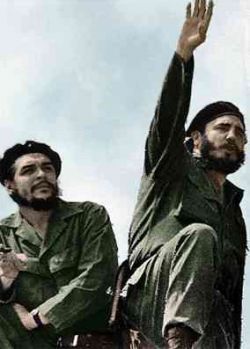 Fidel Castro and Ernesto "Che" Guevara - Photo: Public DomainHis whole life was closely linked to the Cuban revolution. An appraisal of his role is in fact an appraisal of the Cuban revolution, the first to abolish capitalism in the Western Hemisphere and one which for over five decades resisted the onslaught of US imperialism, barely 90 miles to the north.
Fidel Castro and Ernesto "Che" Guevara - Photo: Public DomainHis whole life was closely linked to the Cuban revolution. An appraisal of his role is in fact an appraisal of the Cuban revolution, the first to abolish capitalism in the Western Hemisphere and one which for over five decades resisted the onslaught of US imperialism, barely 90 miles to the north.
When commenting on the death of Venezuelan president and revolutionary leader Hugo Chavez, Fidel said: “Do you want to know who Hugo Chavez was? Look at who is mourning and who is celebrating.” The same can be said of Fidel Castro. News of his death were received with jubilation by the counter-revolutionary Cuban exiles in Miami, by the reactionary opposition in Venezuela and media commentators around the world, right-wing and “liberal” alike.
On the other hand, Fidel’s death was felt as a blow by millions of workers and youth, revolutionary and left wing activists in Latin America and around the world, for whom Fidel was a symbol of the Cuban revolution, of standing up to imperialism, of guaranteeing good quality healthcare and education for all.
There is a very good reason why the ruling classes around the world hated him so much and why US imperialism plotted over 600 different ways of assassinating him. It was the threat of a good example that the Cuban revolution gave to the oppressed of the world. The Cuban revolution, by abolishing capitalism, was able to eradicate illiteracy, give all its citizens a roof over their heads, create a first class health service which has reduced infant mortality and increased life expectancy to levels in the advanced capitalist countries and massively improved the education standards of its people. All of this in a country which prior to the revolution had been the brothel and casino of the US and despite the decades of terrorist harassment and the criminal trade blockade and embargo imposed by Washington.
We stand unconditionally for the defence of the Cuban revolution, for the same reasons. That is our starting point. Any appraisal of the figure of Fidel Castro and of the Cuban revolution has to be a balanced and critical one, if we are to learn anything from it. But it has to start from the standpoint of recognising the historic gains of the revolution, which were achieved by expropriating capitalists, imperialists and landlords.
To give just a few examples: the Cuban revolution abolished illiteracy and has now abolished child malnutrition. Life expectancy at birth in Cuba is 79.39 years, higher than in the US at 78.94 and over 16 years longer than in neighbouring Haiti’s 62.75. The Infant Mortality Rate (deaths of infants under one year of age per 1,000 Births) in Cuba is 4.5, whereas in the US it is 5.8 and in Haiti: 48.2.
Fidel was born in 1926 in Birán, in the Holguín province in the east of Cuba, into a family of landowners. He attended private religious schools in Santiago and then Havana. He became involved in politics when he started to study Law at the university in Havana.
Cuba was the last Latin American country to achieve formal independence, but as soon as it had freed itself through revolutionary struggle from decaying Spanish imperialism, in 1898, it fell into the claws of rising US imperialism. The powerful neighbour to the north dominated the Cuban economy almost completely and through that exercised control of its political set up. For a period of time, the Platt amendment formalised this humiliating domination in the form of a clause in the Cuban Constitution which allowed for US military intervention in the country. A burning sense of injustice and a deep felt desire for national sovereignty inspired several waves of revolutionary struggle in the first half of the 20th century. Fidel became acquainted with, and was inspired by, the most important figures of Cuba’s war for independence.
At the same time, the island had a large working class which had developed militant traditions, starting with a powerful anarcho-syndicalist trend, then later a militant Communist Party, a large Left Opposition, an insurrectionary general strike in 1933, etc. National and social liberation had become closely intertwined, for instance in the thinking of Julio Antonio Mella, the founder of the Cuban Communist Party, of Antonio Guiteras, the founder of the Joven Cuba movement and others.
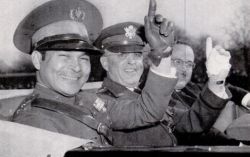 Cuban dictator, Fulgencio Batista, with U.S. Army Chief of staff, Malin Craig - Photo: Public DomainIn 1945, when Fidel went to university the generation of middle class youth that was becoming involved in radical politics was not at all attracted to the Cuban Communist Party (officially known as the PSP), rather, they were repelled by it. The PSP, following the “democracy against fascism” policy of the Stalinised Comintern, had participated in the 1940-44 government of Fulgencio Batista.
Cuban dictator, Fulgencio Batista, with U.S. Army Chief of staff, Malin Craig - Photo: Public DomainIn 1945, when Fidel went to university the generation of middle class youth that was becoming involved in radical politics was not at all attracted to the Cuban Communist Party (officially known as the PSP), rather, they were repelled by it. The PSP, following the “democracy against fascism” policy of the Stalinised Comintern, had participated in the 1940-44 government of Fulgencio Batista.
Fidel was attracted to anti-imperialist policies, which included his participation in a failed military expedition to the Dominican Republic to overthrow the Trujillo dictatorship in 1947. In 1948 he was part of a delegation to a Latin American students congress in Colombia, where he witnessed the Bogotazo uprising which followed the assassination of radical leader Jorge Eliécer Gaitán on April 9.
Castro also became linked to the Ortodoxo Party of Chibás, a popular senator who denounced the corruption of the Auténtico Party, which he had originally belonged to and who committed suicide in 1951.
By 1952, Fulgencio Batista had carried out his second coup. Fidel and a group of his comrades (including his brother Raúl, Abel Santamaría, his sister Haydée and Melba Hernández) started to organise a fighting organisation, mostly drawn from the youth of the Ortodoxo Party. On July 26, 1953, they carried out a daring assault on the Moncada Army Barracks in Santiago. Their aim was to capture a large number of weapons and issue a call for a national uprising against the Batista dictatorship. The attempt failed, and nearly half of the 120 young men and women who took part were killed after being captured.
Fidel’s speech in the dock, which he used to explain his program and ended with the famous words “Condemn me! History will absolve me”, made him famous. The program of what became known as the July 26 Revolutionary Movement (M-26-7), was summarised in 5 revolutionary laws they had planned to broadcast:
The reinstatement of the 1940 Cuban constitution.
Agrarian reform.
The right of industrial workers to a 30% share of company profits.
The right of sugar workers to receive 55% of company profits.
The confiscation of holdings of those found guilty of fraud under previous administrations.
It was a progressive national democratic program, which also contained a number of points aimed at improving the conditions of workers. It certainly did not go beyond the limits of the capitalist system, nor did it question private property. After a period in jail, Fidel was amnestied and went to Mexico.
On the basis of the Moncada program they organised a group of men to travel in the Granma boat to Cuba at the end of 1956. Again, their idea was that this would coincide with an uprising in the east of the country, around Santiago. Yet again, their plans did not work out and most of the members of the expeditionary force were either killed or captured in the first few hours. Only 12 remained and retreated into the Sierra Maestra mountains. And yet, within just over two years, on January 1, 1959, Batista was forced to flee the country and the Cuban revolution had triumphed.
The victory of the revolutionary war was due to a series of factors: the extreme rottenness of the regime, the guerrilla war in the mountains which, using revolutionary methods of agrarian reform, had managed to win over the peasantry and demoralise the army conscripts, the widespread opposition in the llano (the plains) amongst the middle layers and, last but not least, the powerful participation of the worker’s movement (which is less known). The final blow to the regime was the revolutionary general strike called by the M-26-7 which lasted for a week in Havana until the arrival of the guerrilla columns.
For the next two years, there was a process of rapid radicalisation of the revolution. The implementation of the national democratic program of the Moncada, particularly agrarian reform, provoked the wrath of the ruling class, the shedding of the more moderate elements from the first revolutionary governments, the enthusiasm of the masses of workers and peasants who were pushing for more, the counter-reaction of US imperialism and in response to all this ever more radical measures of the revolution against imperialist properties on the island.
The consistent implementation of a national democratic program had led to the expropriation of US multinational corporations and since these dominated key sections of the economy, this led to the de facto abolition of capitalism by 1961. Once I asked a Cuban comrade who had been involved in the revolutionary and trade union movement in Guantánamo since the 1930s, how he would characterise Fidel and the leadership of the M-26-7, and he replied that they were “revolucionarios pequeño-burgueses guapos” (courageous petty bourgeois revolutionaries). Here “petty bourgeois” was meant not as an insult but as a description of the class origins of many of them, as well as a description of the program they had fought for. The fact that they implemented their program courageously pushed them much further than they had anticipated. It is to the credit of Fidel Castro that he did carry the process to the end.
The existence of the USSR at the time, also played a role in the course events took after the revolutionary victory. This is not to say that the Soviet Union encouraged them to move against capitalism. On the contrary, it is on record that the Soviet Union discouraged them and advised them to proceed cautiously and slowly. In spite of this, the fact that the Soviet Union was able to fill the gaps left by the growing belligerence of the US (selling them oil, purchasing sugar cane, breaking the blockade) was an important factor.
For about 10 years, however, the relationship between the Cuban revolution and the USSR was an uneasy one. The Cuban Communist Party (PSP) had only joined the revolutionary movement in its last stages and the Cuban leadership was proud of its own independence and had its own base of support. The first period of the revolution was one of wide ranging discussions and debates in all fields (foreign and economic policy, the arts and culture, Marxism) in which the Stalinists attempted - not always successfully - to impose their line.
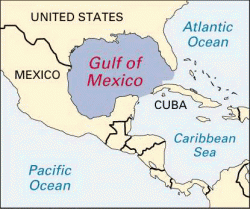 Image: Nick HammerFidel and the others were deeply suspicious of the USSR, particularly after the way in which Khrushchev had reached a deal with the US at the time of the 1962 missile crisis without even consulting them. Furthermore, particularly at the insistence of Che Guevara, they attempted to spread the revolution to other countries in Latin America and beyond, something which clashed with the policy of “peaceful coexistence” pursued by the Soviet Union as well as with the profoundly conservative outlook of most of the Latin American Communist Parties.
Image: Nick HammerFidel and the others were deeply suspicious of the USSR, particularly after the way in which Khrushchev had reached a deal with the US at the time of the 1962 missile crisis without even consulting them. Furthermore, particularly at the insistence of Che Guevara, they attempted to spread the revolution to other countries in Latin America and beyond, something which clashed with the policy of “peaceful coexistence” pursued by the Soviet Union as well as with the profoundly conservative outlook of most of the Latin American Communist Parties.
Those attempts to export the revolution failed, partly because of the crude way in which the experience of the Cuban Revolution was generalised. The idea that a small group of armed men taking to the mountains would in a short space of time lead to the overthrow of reactionary regimes (which was in itself an oversimplification of the conditions which allowed the Cuban victory) was proven wrong in practice. Perhaps the most extreme example was that of Bolivia, a country which had seen a partial agrarian reform and which also had a militant and politically advanced mining proletariat, and where Che Guevara’s attempt led to his death in 1967 at the hands of US imperialism (which had also learnt some lessons from Cuba).
Progressively, the Cuban revolution became isolated and therefore more dependant on the Soviet Union. The failure of the 1970 “ten million ton sugarcane crop” and the economic dislocation it caused, only increased this dependency. Close ties with the USSR allowed the Cuban Revolution to survive for three decades, but also brought in strong elements of Stalinism. The Quinquenio Gris (Five Grey Years) of 1971-75 saw the use of repressive measures to impose Stalinist thinking in the fields of the arts, social sciences and many others. It was also at this time that homophobia and discrimination and harassment of gay men (which already existed and had been inherited from the previous regime) became institutionalised.
The way the revolution had triumphed, through the leadership of a guerrilla army, also played a role in the bureaucratic nature of the state in the revolution. As Fidel himself explained: “a war is not led through collective, democratic methods, it is based on the responsibility of command”. After the revolutionary victory the leadership had huge authority and widespread support. Hundreds of thousands took up arms at a moment’s notice in 1961 to defeat the Bay of Pigs invasion. One million people gathered in Revolution Square in 1962 to ratify the Second Declaration of Havana.
However, there were no mechanisms of revolutionary democracy through which ideas could be debated and discussed and, above all, through which the masses of workers and peasants could exercise their own power and hold their leaders to account.
The Cuban Communist Party, for instance, which resulted eventually from the fusion of the Stalinist PSP, the M-27-6 and the Revolutionary Directorate, was founded in 1965, but did not hold its first congress until 1975. And it was not until 1976 that a formal constitution was passed.
A planned economy needs workers’ democracy as the human body needs oxygen, as this is the only way of keeping a check and control over production.
This process of bureaucratisation also had an impact on the foreign policy of the leadership of the Cuban revolution. The Cuban revolution has a record which is second to none in terms of international solidarity, sending medical aid and help around the world. It also played a crucial role in the defeat of the South African regime in Angola, a struggle in which hundreds of thousands of Cubans participated over many years.
However, in revolutions such as that of Nicaragua in 1979-89 and in Venezuela more recently, while offering invaluable practical and material support and solidarity, the political advice given by the Cuban leadership has been that of not following the same path as the Cuban revolution in abolishing capitalism. This had disastrous consequences in both countries. In Nicaragua the USSR applied enormous pressure for the Sandinista leadership to maintain a “mixed economy” - i.e. a capitalist one - and then to participate in the Contadora peace negotiations which ended up strangling the revolution. The Sandinista leadership was very close to and had a lot of respect for the Cuban revolution. Fidel’s advice, however, was the same as that of the Soviet Union: do not expropriate the capitalists, what you are doing is as much as can be done in Nicaragua today. That advice proved fatal.
In Venezuela too, while the Cuban revolution provided invaluable support (particularly with the Cuban doctors) and solidarity, the political advice which was given was again that of not going down the road the Cuban revolution had travelled 40 years earlier. The result of making half a revolution we can see clearly today: a massive dislocation of the productive forces, the rebellion of capitalism against any attempt to regulate it. This advice not only had a negative impact on the Nicaraguan and Venezuelan revolutions, but it has also compounded the problem of isolation of the Cuban revolution itself.
The heroic resistance of the Cuban revolution after the collapse of the USSR is truly impressive. While the leaders of the “Communist” Party in the Soviet Union moved swiftly and effortlessly towards restoring capitalism and looting state property, Fidel and the Cuban leadership defended the gains of the revolution. The “special period” as it was known, was also a testament to the vitality of the Cuban revolution. A generation was alive which still remembered what life was like before the revolution and others could compare their own living standards with those of neighbouring countries under capitalism.
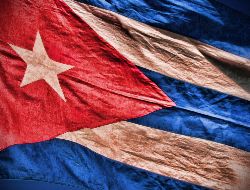 Photo: Aaron EscobarThe leadership resisted, and the Cuban people, in a collective manner, found ways and means of overcoming the economic hardship. Completely isolated in the face of the US blockade, Cuba had to make important concessions to capitalism, while maintaining the bulk of the economy in state hands. Tourism became one of the main sources of income, with all the accompanying evils it comes with.
Photo: Aaron EscobarThe leadership resisted, and the Cuban people, in a collective manner, found ways and means of overcoming the economic hardship. Completely isolated in the face of the US blockade, Cuba had to make important concessions to capitalism, while maintaining the bulk of the economy in state hands. Tourism became one of the main sources of income, with all the accompanying evils it comes with.
The development of the Venezuelan revolution, particularly after the failed coup in 2002, provided another lifeline ten years later. This was not only due to the exchange of Cuban doctors for Venezuelan oil, but it also rekindled the enthusiasm of the Cuban masses in seeing revolution developing in Latin America again. Economic difficulties and the exhaustion of the revolution in Venezuela - precisely because it did not go all the way and expropriate the property of the oligarchs and imperialists as Cuba had done - means that this is now coming to an end.
The impasse the Cuban revolution finds itself in has pushed an important section of the leadership in the direction of Chinese or Vietnamese-style market reforms and concessions to capitalism. Many steps have already been taken in this direction. They hope that such measures will at least bring some economic growth. That is an illusion. Today the world capitalist system is in crisis and it is doubtful how much it will want to invest in Cuba. Cuba does not possess the enormous reserves of cheap labour which are one of the key factors of the Chinese economic “success”. Even if all of this were not true, the restoration of capitalism in China has been accompanied by a massive polarisation of wealth, the brutal exploitation of the working class and the destruction of the conquests of the Chinese revolution.
It is in this context that Obama attempted a shift in US tactics. The strategy remains the same: the restoration of capitalism in Cuba and the destruction of the gains of the revolution, but instead of continuing with the failed tactic of direct confrontation, funding of counter-revolutionary and terrorist groups, etc., they have now decided that it might be wiser to destroy the revolution from within by using the domination of the world market over a small island with very few resources and a very low level of labour productivity.
Clearly, the imperialists saw Fidel, even after his formal retirement from official political office, as an obstacle to this process. He publicly denounced bureaucratism and growing inequality and warned of the danger of the revolution being destroyed from within. In a famous speech at the University of Havana in November 2005, he talked of “our flaws, our mistakes, our inequalities, our injustice”, and warned that the revolution was not irreversible and could end up like the Soviet Union. “This country can self-destruct; this Revolution can destroy itself, but they can never destroy us; we can destroy ourselves, and it would be our fault,” said Fidel, and he added, “Either we defeat all these deviations and make our revolution strong, or we die.”
Bureaucratism, however, is not just a deviation, or the problem of a few individuals. It is a problem which stems from the lack of workers’ democracy in the running of the economy and the state and is strengthened by the isolation of the revolution. Having said that, it was clear that the strategists of capitalism believed that so long as Fidel was alive, little progress would be made on the road to capitalism in Cuba.
With his passing away, they hope that the process will now accelerate. Already there are major contradictions and a growing process of social differentiation has begun within the country. The main factors in this process are: the stagnation of the bureaucratically planned economy and the extremely unequal status of Cuba within the world economy, which in turn results from the isolation of the revolution. “Socialism in one country” once again is being proven to be impossible.
From this it follows that the only way forward for the Cuban revolution passes through the struggle for democratic workers’ control in Cuba and for socialist revolution across the world. That is the only way to defend the gains of the Cuban revolution.
Today, the imperialists everywhere go on about the lack of “human rights” in Cuba. These are the same people who turn a blind eye to the Saudi regime and fly its flag at half mast when its reactionary semi-feudal rotten dictator dies. These are the same people who had no problem in installing and supporting the most brutal regimes in Chile, Argentina, Paraguay, Uruguay, Bolivia, Venezuela, Guatemala, Dominican Republic, Mexico, Nicaragua, Guatemala, El Salvador, Honduras… The list is endless.
We are not talking here about the long and distant past either. Not so long ago, US sponsored coups were attempted in Venezuela, Honduras, Ecuador and Bolivia. No, when Obama and Clinton talk of “human rights” what they mean is the right of the capitalists to exploit labour, the right of landlords to evict tenants, the right of wealthy tourists to purchase women and children.
Today more than ever we say: defend the Cuban revolution, no to capitalist restoration, fight capitalism worldwide!

